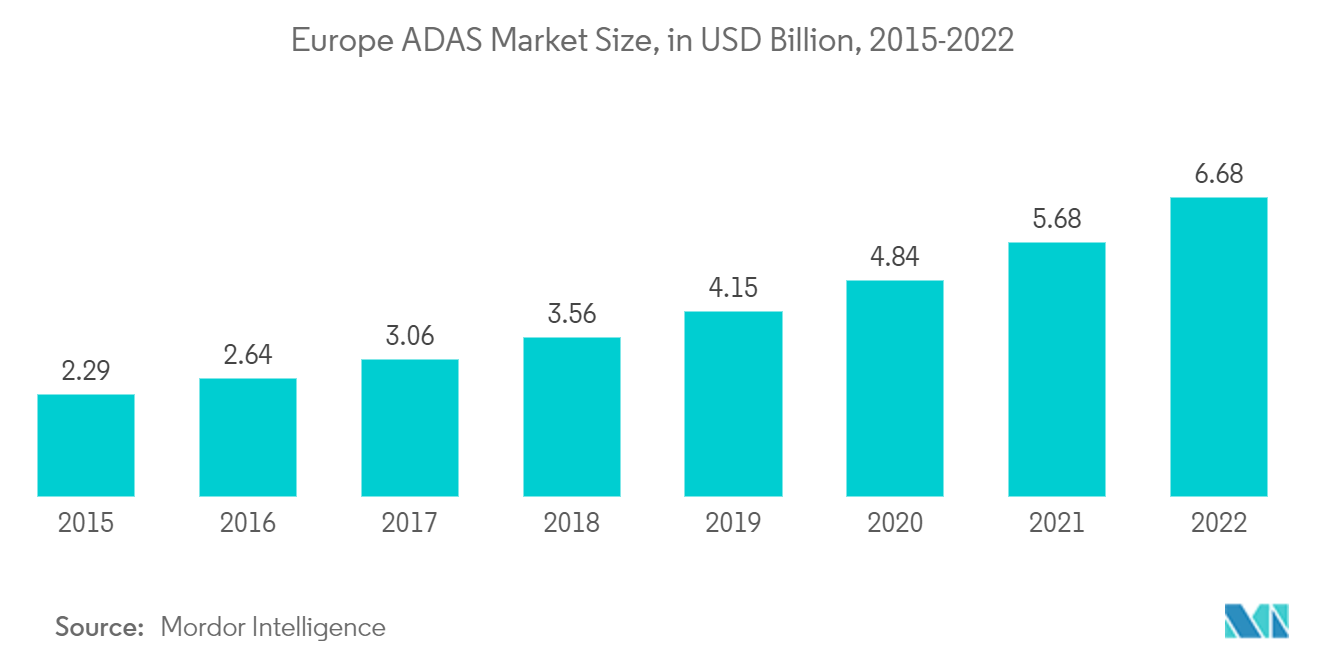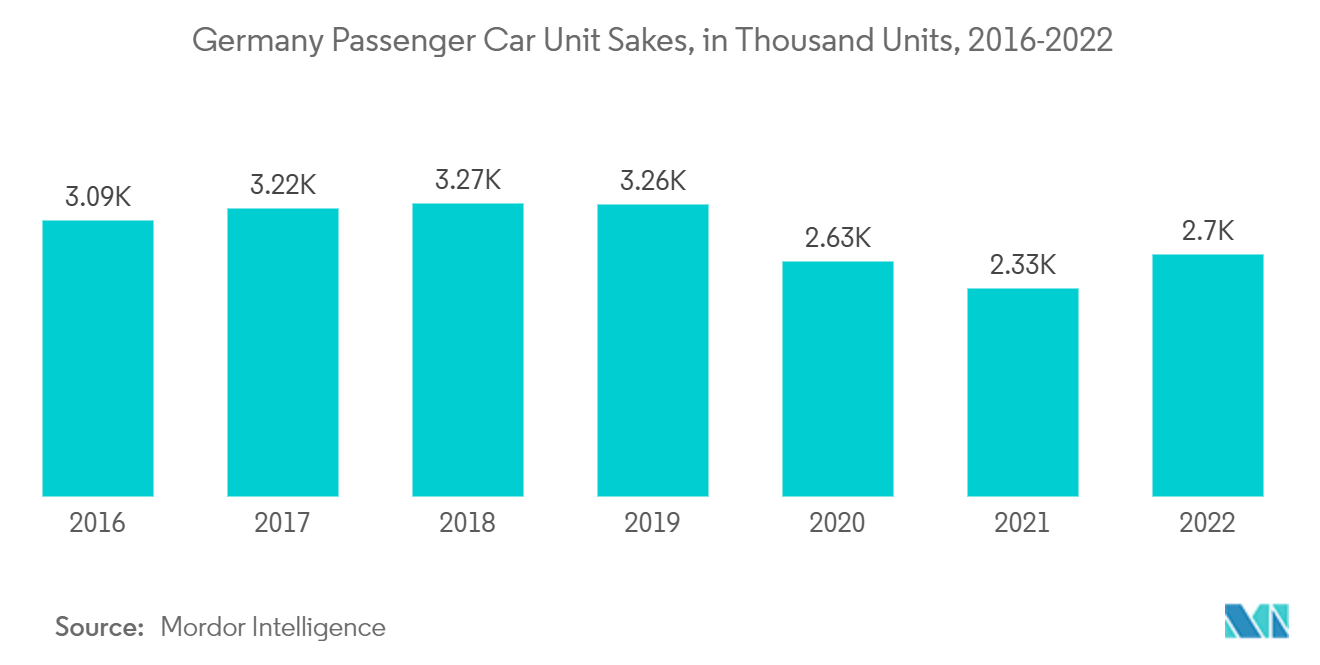Market Trends of Europe Pedestrian Detection Systems Industry
Increasing Adoption of ADAS Systems Driving the Market
- Advanced driver assistance systems (ADAS) are vehicle-based intelligent safety systems developed and deployed by vehicle manufacturers, which have the potential to improve road safety in terms of crash avoidance, crash severity reduction, and protection. Owing to a plethora of features offered by ADAS, like auto stability control, cruise control, traction control, and blind spot detection, among others, the demand for the installation of ADAS features in vehicles is likely to witness exponential growth over the forecast period.
- Simultaneously, governments in the region are focusing on designing several legislative policies and regulations to monitor the users and are proposing policies mandating and encouraging consumers to install ADAS components in vehicles to mitigate rising road accidents across several countries.
- The European Commission has announced that it has begun implementing the new Vehicle General Safety Regulation. It sets the legal basis for the approval of automated and completely driverless cars in the EU and includes a variety of required advanced driver assistance systems to increase road safety. It will assist in safeguarding passengers, pedestrians, and cyclists throughout the EU, saving over 25,000 lives and preventing at least 140,000 serious injuries by 2038.
- The Commission intends to establish technical standards for automated and connected cars this summer, with a special focus on automated vehicles replacing drivers on highways (level 3 automation) and fully autonomous vehicles such as urban shuttles or robotaxis (level 4 automation).
- The new standards will link Eurpean Union (EU) legislation with the new United Nations (UN)-level guidelines on level 3 automation, as well as approve new EU technical legislation for fully autonomous cars. The technical guidelines will encompass testing processes, cybersecurity requirements, data recording rules, safety performance monitoring, and incident reporting requirements for makers of fully autonomous cars.
- The new road safety measures include a variety of safety elements. Intelligent speed assistance, reverse detection with cameras or sensors, drive monitoring system (DMS), event data recorders, and an emergency stop signal should be available on all road vehicles (cars, vans, lorries, and buses). Cars and vans include additional features such as lane-keeping systems and automatic braking.
- Blind spot technology, alerts to avoid collisions with pedestrians or bicycles, and tire pressure monitoring systems are required on buses and trucks. The requirements will first apply to new vehicle types beginning July 6, 2022, and then to all new cars beginning July 7, 2024. Some of the new regulations will be expanded to encompass other types of road vehicles until 2029.
- Additionally, the European New Car Assessment Program (NCAP), a government-backed group that rates cars for safety, may require cars to have a driver-monitoring system in order to earn a five-star safety rating starting in 2023 or 2024.

Germany Leading the Pedestrian Detection Systems Market in Europe
- With the presence of luxury car makers, like Audi, BMW, Mercedes, etc., in the country, customers' preferences have shifted to vehicles with luxurious and advanced features from that of a conventional variant. These car manufacturers are focusing on the preferences of their elite customers for their new products.
- Installation of new plants by OEM suppliers in the country may evolve the market for driver safety systems significantly over the forecast period. An increase in the number of new plants in Germany to increase the implementation of ADAS systems in cars may lower the cost incurred on importing the systems, thereby driving the market for ADAS systems. For instance, Denso, a major automotive supplier, has set up DENSO ADAS engineering services GmbH in Germany to enhance the development of safety technology in vehicles to curb the rate of road traffic accidents.
- In June 2022, MAN Truck & Bus and its partners successfully concluded the CITY research and development project on autonomous driving in cities. Throughout the project, the partners tackled the diverse technical requirements of automated driving in challenging urban traffic conditions, which included interactions with motor vehicles, pedestrians, and cyclists.
- Various subprojects were undertaken to achieve these objectives, including the precise detection of the vehicle environment through a range of sensors, accurate comprehension of different traffic situations, and the appropriate derivation of courses of action. Additionally, the project focused on achieving precise localization within a few centimeters using digital maps and enabling seamless communication with other traffic participants.
- To reduce the number of accidents and fatalities, the Department of Transportation has made it compulsory to incorporate forward collision avoidance technology systems in vehicles from 2017 onward. This system has a combination of long-range detection (e.g., adaptive cruise control), short-range and wide-angle systems (e.g., pedestrian detection), and autonomous emergency braking. This regulation is anticipated to drive the market for pedestrian detection systems in the country over the forecast period.

